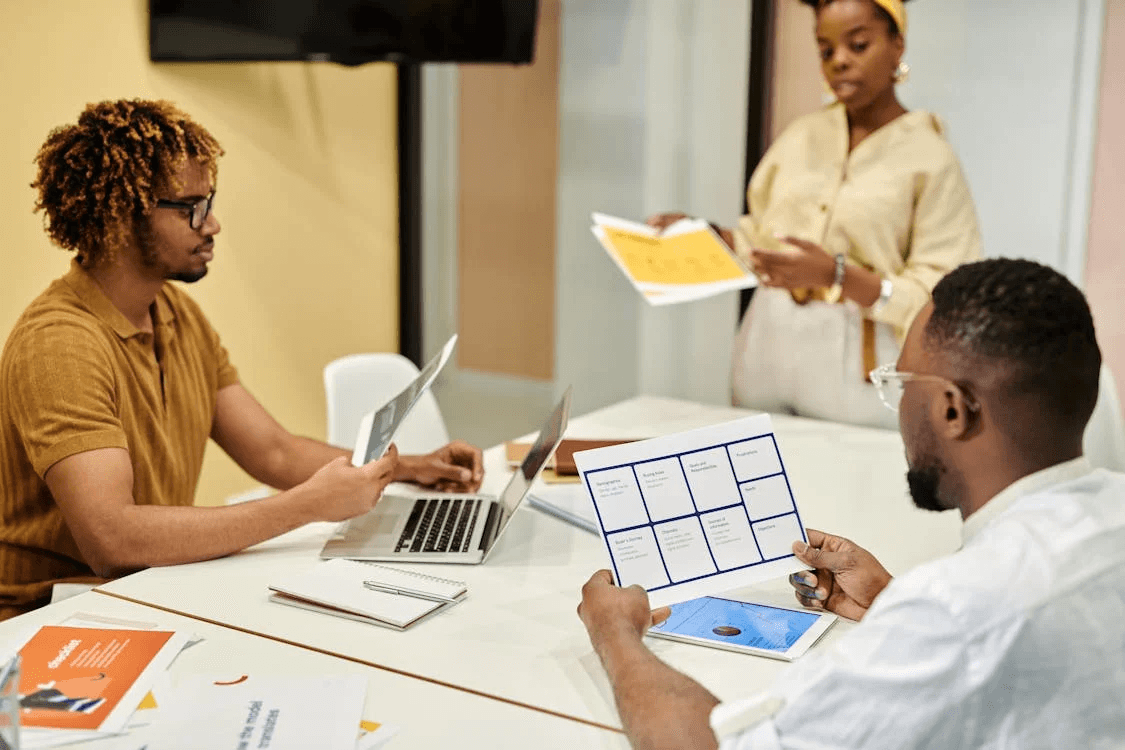Lead Generation
Is AI-Generated Art Legal? Copyright Facts Explained
Explore the legalities and ownership complexities of AI-generated artwork, including copyright concerns, authenticity, and strategies for using AI responsibly while leveraging cold emails and LinkedIn for lead generation.
Feb 25, 2024

Ever stumbled upon a stunning piece of artwork and wondered if it's the creation of a human or an AI? You're not alone! AI art generators are taking the digital world by storm, blurring the lines between technology and creativity. But with this innovative leap comes a big question: Are they even legal?
You've probably seen the buzz online or heard debates among artists and tech enthusiasts. It's a hot topic that's as intriguing as it is complex. As you dive into the world of AI-generated art, you'll find yourself at the intersection of copyright law, ethics, and cutting-edge tech. Stick around to uncover the legalities behind these digital masterpieces.
What are AI art generators?

Imagine having a magic brush that paints whatever you envision without needing you to master the stroke techniques. AI art generators are the digital world's equivalent of that magic brush. They're tools that use artificial intelligence algorithms to create images based on text descriptions or parameters you provide. It's like telling a story to a painter who then brings it to life, except in this case, the painter is a sophisticated software program.
Unlike standard graphic design software that requires hands-on manipulation, AI art generators automate the process. You feed in a prompt, such as a futuristic cityscape at dusk, and the AI synthesizes this information to produce visual content. The technology behind these generators is based on complex neural networks; think of these networks as a mimic of human brains, learning from massive datasets of artwork to understand how to create new, unique pieces.
In the realm of creativity, AI art generators offer a buffet of styles and techniques. They can deliver a range of outputs from classical oil painting effects to the edgy feel of street art. However, toggling through the various styles does require a bit of experimenting to see which aligns best with your vision.
Avoiding Common Pitfalls
When first exploring AI-generated art, users commonly trip over a couple of misconceptions. The most notable one is assuming AI generators can read minds. While they are powerful, they operate within the confines of their programming and the quality of input provided. It's like sipping a fine wine; the experience is unique to the individual's palate, or in this case, to the clarity of your instructions.
To dodge these pitfalls, remember to:
Specify your prompts. The more detailed you are, the closer the output will align with what you have in mind.
Start with simple requests before gradually moving to more complex ones.
Techniques and Methods
AI art generators are versatile but their use extends beyond generating standalone pieces of art. These tools can be vital in providing inspiration or base imagery for further refinement by human artists. Moreover, different situations call for distinct approaches. For instance:
Generating concept art for a video game? You might want an epic, fantastical style.
Crafting a book cover? Opt for a design that captures the essence of the story.
As you navigate through various techniques, it's crucial to pair the AI's output with the intended emotional tone or message you wish to convey.
The rise of AI-generated art
As you delve deeper into the creative universe, you'll find that AI-generated art is like a new color palette that's just been discovered. Much like how the invention of the camera changed the art world, AI art generators are shaking things up by automating creativity. Imagine having a partner that can translate a fleeting thought into a visual reality within seconds; that's the power at your fingertips.
Artists and tech enthusiasts are using AI to push boundaries, creating works that range from abstract expressions to hyper-realistic portraits. It's not mind-reading, though. To get the best results, you've got to guide the AI with clear, descriptive instructions. Think of it as a collaboration; you're the director and the AI is your skilled artist.
When exploring AI-generated art, it's easy to get caught up in the novelty. However, remember that these tools have their limits. They work within the realm of patterns they've learned from extensive datasets. So, if you're vague or overly ambitious with your descriptions, you'll likely end up with something unexpected. Treat the AI as you would a new paintbrush or a camera lens. It takes practice to know how to wield it effectively.
For creators seeking inspiration or foundational images, AI art generators are a godsend. They're not a substitute for the human touch in art, but rather a springboard for further enhancement. The key is to understand that the AI's output is a starting point. As with any art medium, refining and adding your personal stamp is what will set your work apart.
When it's time to pair the AI's artwork with an emotional tone or message, be strategic. Specify nuances in your descriptions. Just as a skilled painter chooses the right brush for a stroke, choose your words wisely. This approach ensures that the emotional resonance you're aiming for isn't lost in the digital translation.
In the realm of AI art generation, experimenting is the path to mastery. Try out different styles and settings to learn what resonates with your vision. Also, stay abreast of the latest advancements in AI to keep your creative arsenal up-to-date. As AI technology evolves, so too will the possibilities for its application in art.
Understanding copyright law and AI art
Venturing into the world of AI-generated art, you've probably heard whispers about copyright complications. Here's the breakdown without the tangle of legal jargon. Think of copyright law as the fence around someone's property. It’s there to protect the owner's creations just like a fence protects a home. Now, when AI creates art, it's like a new house appearing out of thin air. Who owns the fence around this mysterious new building?
Copyright law hasn't fully caught up with technology; thus, the lines can be a bit blurred. The ground rules are simple: if you create something, it's generally yours. But with AI, who's the actual creator? Is it the programmer who crafted the AI, the user who typed in the command, or the AI itself? The waters are definitely muddy.
Here are points to ponder:
Originality: For a work to be copyrighted, it needs to be original. AI art is often derivative, based on countless other pieces it has 'seen.' Does this make it less original?
Authorship: Copyright law attributes rights to the author. With AI, identifying an author is tricky. Who takes the credit when your AI program paints a masterpiece?
Common Misconceptions About AI Art
One major false belief is that anything an AI generates is fair game—public domain, free for the taking. Not so fast. Despite the confusion, there's no blanket law that says AI-generated content is automatically exempt from copyright. Using an AI-created image without proper consent can land you in hot waters, legally speaking. Always err on the side of caution and respect intellectual property rights.
Tips for Navigating Copyright with AI Art
To keep yourself in safe territory:
Keep Records: Document your interactions with AI generators. Who knows when you'll need proof of your creative process?
Seek Permissions: If you're using AI art commercially, investigate whether you need licenses or permissions. It's better to ask than to beg for forgiveness later.
Stay Informed: Laws are evolving. Keep abreast of the latest copyright regulations affecting AI art to avoid unintended infringement.
Best Practices for Utilizing AI Art Legally
Incorporating AI art into your projects requires a cautious approach.
Read the Terms: Check the terms of service for your AI art generator. They usually have guidelines on how the generated art can be used.
Challenges and controversies surrounding AI art generators

As you're delving into the world of AI-generated art, you'll find it's a field replete with challenges and controversies that are as complex as they are fascinating. Understanding these intricacies not only helps you navigate the terrain but also sheds light on the state of technology's intersection with creativity.
Intellectual Property Rights: A major hurdle with AI art is the issue of who owns the rights to the artwork. When an AI produces art:
Is it the creator of the AI?
Is it the user who keyed in the prompts?
Or is it the AI itself?
Consider the scenario as similar to a photographer and their camera. If you take a picture, you own the copyright to that image, even though the camera is the tool that captured it. But with AI, it's as if the camera decides the framing, lighting, and subject all on its own. This conundrum leaves copyright law in murky waters.
Authenticity and Originality: Originality in art is prized, but when an AI creates artwork based on thousands of existing pieces, questions arise about the originality of the output. AI blurs the lines between inspiration and replication, challenging our traditional notions of authenticity.
Misconceptions About AI Art: There's a common belief that AI art generators spit out art at the click of a button, requiring no skill or input from a human artist, but this isn't entirely true. Certainly, AI facilitates the process, but it often requires considerable human guidance to achieve a desired result.
To navigate these challenges, here are some practical tips:
Read Terms of Service: Always scrutinize the fine print when using an AI art generator. This will inform you of your rights and restrictions regarding the artworks you create.
Document Your Input: Keep detailed records of the prompts or inputs you provide to the AI. This acts as evidence of your creative contribution should any legal issues arise.
Respect Copyright Law: Ensure any images you use as prompts are free for commercial use or properly licensed. This means staying away from copyrighted images unless you've obtained permission.
As you explore different AI art generators, you'll find each has its nuances. Some may cater to specific styles or offer more sophisticated user controls. Choosing the right generator often depends on your artistic goals and how much control or input you wish to have in the creation process.
Unlocking the Secret to More Leads: Cold Email and LinkedIn Outreach
The future of AI-generated art and its legal implications
Generating leads can feel like trying to find a hidden treasure — you know it's out there, but you need the right map to find it. Thankfully, you've got cold email and LinkedIn outreach, two powerful tools in your arsenal to navigate the choppy waters of lead generation.
Understand Your Audience like you're a detective solving a case. Before you send that email or LinkedIn message, ask yourself: Who are they? What do they need? What's in it for them? Tailoring your message to their interests is like choosing the right key for a lock; it opens the door to a conversation.
Personalize Your Approach: You’re not just sending a message; you’re starting a relationship.
Offer Value: Whether it's an insightful article or a helpful tip, make sure your message benefits them somehow.
Don't Fall for the Automation Trap. It might seem like a good idea to automate your outreach, but beware — it's easy to spot and often ignored. It's like sending a robot to a networking event. Instead, hand-craft your messages for that personal touch that says, I'm talking to you, not your inbox.
Crafting Your Cold Email Masterpiece
Think of your cold email as a coffee invitation, not a sales pitch. You want to start a dialogue, so keep it friendly and concise. Here's a structure you can try:
The Friendly Opening: A warm hello and a personalized compliment never go amiss.
The Connection Bridge: Explain why you're reaching out. Did you read a recent article they wrote? Mention it here.
The Value Proposition: Softly introduce what you offer — toss the ball into their court without expecting anything back.
The Soft CTA: A gentle nudge for a response, like asking their opinion on a relevant matter.
Engage With Their Content: Like, comment, and share. It shows you're interested and active.
Be Direct But Not Pushy: State your intent clearly but leave space for them to come to you.
Mind Your LinkedIn Etiquette: You’re on
Conclusion
Navigating the world of AI-generated art isn't just about understanding the legalities—it's about respecting the creative process. You've seen how the rights to AI artwork can be complex, much like the relationship between a photographer and their camera. Remember, authenticity and originality are still at the heart of art, even when AI is involved. By adhering to copyright laws and reading terms of service, you're on the right track to using AI art generators responsibly. And when it comes to generating leads, whether through cold email or LinkedIn, personalization and understanding your audience are key. Keep these tips in mind, and you'll not only stay on the right side of the law but also engage effectively with potential clients and collaborators.
Frequently Asked Questions
Who owns the rights to AI-generated artwork?
The rights to AI-generated artwork can be complex and often depend on the terms of service of the AI art generator used. Generally, the creator who inputs the command may hold the rights, but it's essential to review the AI tool's policy.
Does the photographer or the camera own the image rights?
In the relationship between a photographer and their camera, the photographer owns the image rights. The camera is simply the tool used to capture the photographer's vision.
Is AI-generated art truly authentic and original?
Authenticity and originality in AI-generated art are subjects of debate. While AI can create art based on data and algorithms, the uniqueness of each piece and the input from a human creator can contribute to its originality.
What are common misconceptions about AI in the creative process?
A common misconception is that AI replaces human creativity. In truth, AI is a tool that can augment the creative process, but it requires human input and guidance to create art.
How can I use AI art generators responsibly?
To use AI art generators responsibly, read the terms of service carefully, document your inputs, and ensure you are respecting copyright law. It's also important to recognize the creative input you contribute to the process.
What are some tips for generating leads through cold email?
When using cold email for lead generation, understand your audience, personalize your approach, avoid overt automation that feels impersonal, provide clear value, and craft a compelling subject line and message.
How should I engage with potential leads on LinkedIn?
Engage with potential leads on LinkedIn by personalizing your connection requests, actively engaging with their content, and following LinkedIn etiquette. Also, provide value in your messages and maintain a professional tone.

